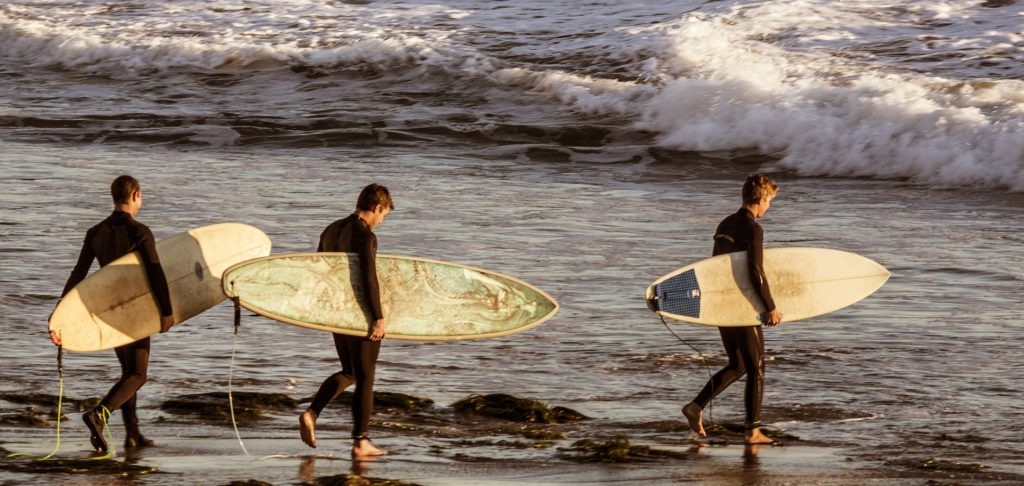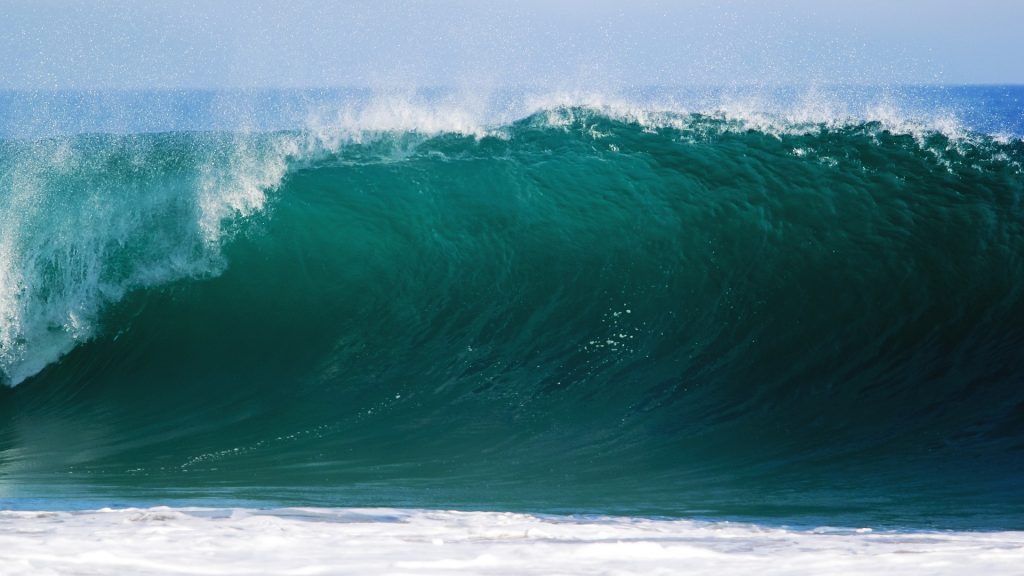The History of Surfing – Surfing Now & Then

With over 20 million participants worldwide, surfing has experienced a dramatic evolution. From its spiritual beginnings to earning its place in pop culture, surfing has transformed into an international, multi-billion-pound industry. But how did surfing begin? And how did surfing spread from Hawaii to Europe?
To help you understand the history of surfing, we’ve shared the key events that have developed surfing into the sport we recognise today.
How did Surfing begin?
Whilst most people believe surfing originates from Hawaii, that may not actually be the case. Although surfing was spread by Polynesian migrants from Indonesia through Fiji, the Marquesas, Tahiti and Hawaii, the first activity that can be recognised as surfing was in Peru!
Around 3000 to 1000 BCE, Peruvian fishermen built ‘caballitos de totora’ to transport their nets and collect fish. A type of reed watercraft, fisherman used to straddle the craft liking horses, hence its name ‘little reed horses’ in English.
Although it is debated in the surfing world as to whether ‘caballitos de totora’ constitutes the first form of surfing, the similarity in its shape is definitely convincing!
Surfing nearly went extinct?!
While over 20 million people actively surf world-wide, believe it or not, the sport of surfing was nearly lost in the 1880’s!
Believing the sport was a waste of time and had sinful links to gambling and nakedness, American missionaries preached against surfing in Hawaii. As colonial powers introduced a cash economy to the island, Hawaiians worked on sugar plantations, reducing their spare time and time catching waves.
Thankfully, the sport was resurrected in the late 1880’s by King Kalakaua who actively encouraged the practice of Hawaiian traditions including surfing.
Surfing in Europe
We know Hawaii is the stereotypical surfing hotspot, but how did surfing spread to Europe?
After encouragement from King Kalakaua, surfers travelled across the world to demonstrate their ability on the waves. In 1885, three Hawaiian princes visited the USA to showcase the sport, with a similar one taking place in Bridlington, UK in 1890.
However, it wasn’t until Duke Kahanamoku’s success at the 1920 Olympic Games in Antwerp, that the popularity of surfing in Europe truly began to gain momentum.
By the mid-1920’s, surfing had travelled to Europe, with the first surfers being filmed in Portugal in 1926.
Surfing was mainly focused in Portugal until WWII, when U.S. troops introduced the sport to France, transforming Biarritz into the best surfing destination in Europe.
After Peter Viertel imported the first surfboards into Biarritz and then travelled down into Spain in the 1960’s, the sport had spread across the European coast.
How have surfboards changed?
During the early 1700’s, Hawaiians followed the Code of Kapu (taboos) which dictated every aspect of an islander’s life. Under the Code, the best surf spots were reserved for Hawaiian royalty, with the island priest being sent for to pray over the water if the swell wasn’t there. Even the size of the surfboard was controlled, with royalty riding boards up to 24 feet long, whilst the rest of the islanders rode boards that averaged 12 feet long.
However, as surfing spread across the world and the sport grew in popularity, surfers began to look at ways to enhance their performance.
In 1935, Alfred Gallant Jr. became the first person to use wax on a surfboard, after noticing the effect it had on the floors of his home. In the same year, Tom Blake introduced the first stabilising fin on a surfboard, with a twin system being introduced in 1943 and Simon Anderson introducing a triple fin system in 1980.
Not only did WWII help spread surfing, it also gave way to a new generation of surfboards. As a result of the invention of chemicals and materials such as Styrofoam, Fiberglass and Resin, lighter boards were created allowing more challenging surf.
Whilst original wooden longboards usually measured 16 foot and could weigh up to 175 pounds, the 1960’s saw surfboards change shape and become smaller. After Irish Hawaiian George Freeth cut the original 16ft wood longboards in half, new surfing techniques that were more suited to European beach breaks emerged.
The Biggest Waves Surfed

2004
Date: 10th January 2004
Location: North Shore of Maui, Hawaii
Surfer: Pete Cabrinha
Height: 70 ft
2011
Date: 1st November 2011
Location: Nazare, Portugal
Surfer: Garret McNamara
Height: 78 ft
2008
Date: 5th January 2008
Location: Cortes Bank, California
Surfer: Mike Parsons
Height: 77 ft
2017
Date: 8th November 2017
Location: Nazare, Portugal
Surfer: Rodrigo Koxa
Height: 80ft
Most Influential Surfers
Duke Kahanamoku
The undisputed father of modern surfing, Duke Kahanamoku is inducted into both the Swimming and Surfing Hall of Fame. Helping to spread the sport around the world, surfing would not have advanced into the popular competitive sport it is today without his encouragement.
Kelly Slater
The record holder for the most money made by a surfer in one year ($3 million in 2009), American Kelly Slater is the most successful surfing champion in the world.
Tom Blake
Changing both surfing technique and surfboard design, Tom Blake is one of the most influential surfers. A competitor of the Duke, Blake transformed surfing performance into the dynamic sport we now know.
Tom Curren
Immortalised forever by his clashes with the young Mark Occhilupo in the 1980’s, Tom Curren helped develop surfing into a career, starring in “The Search” series filmed by Sonny Miller.
Laird Hamilton
An incredible big-wave rider in the 1990s, Laird Hamilton innovated tow-surfing and introduced the Stand-Up Paddleboard movement, creating a new way to ride the waves.
Celebrity Surfers
From Mark Twain and Prince of Wales to Cameron Diaz and Chris Hemsworth, the popularity of surfing means more and more celebrities are riding waves.
Here’s just a few that have given it a go:
Ashley Greene
Ben Stiller
Charlize Theron
Chris Hemsworth
Chris Martin
David Beckham
Emma Stone
Gisele Bundchen
Jack Johnson
Jennifer Lawrence
Kate Hudson
Kendal Jenner
Lady Gaga
Lindsay Lohan
Matthew McConaughey
Orlando Bloom
Reese Witherspoon
Vanessa Hudgens
We hope you’ve learned something about the history of surfing.
If you want to give surfing a go like the celebrity surfers, let Sea-Lifts provide reliable and hassle-free transfers for your surfing holiday in Europe. Use our quote generator to get an instant quote and book online now!
